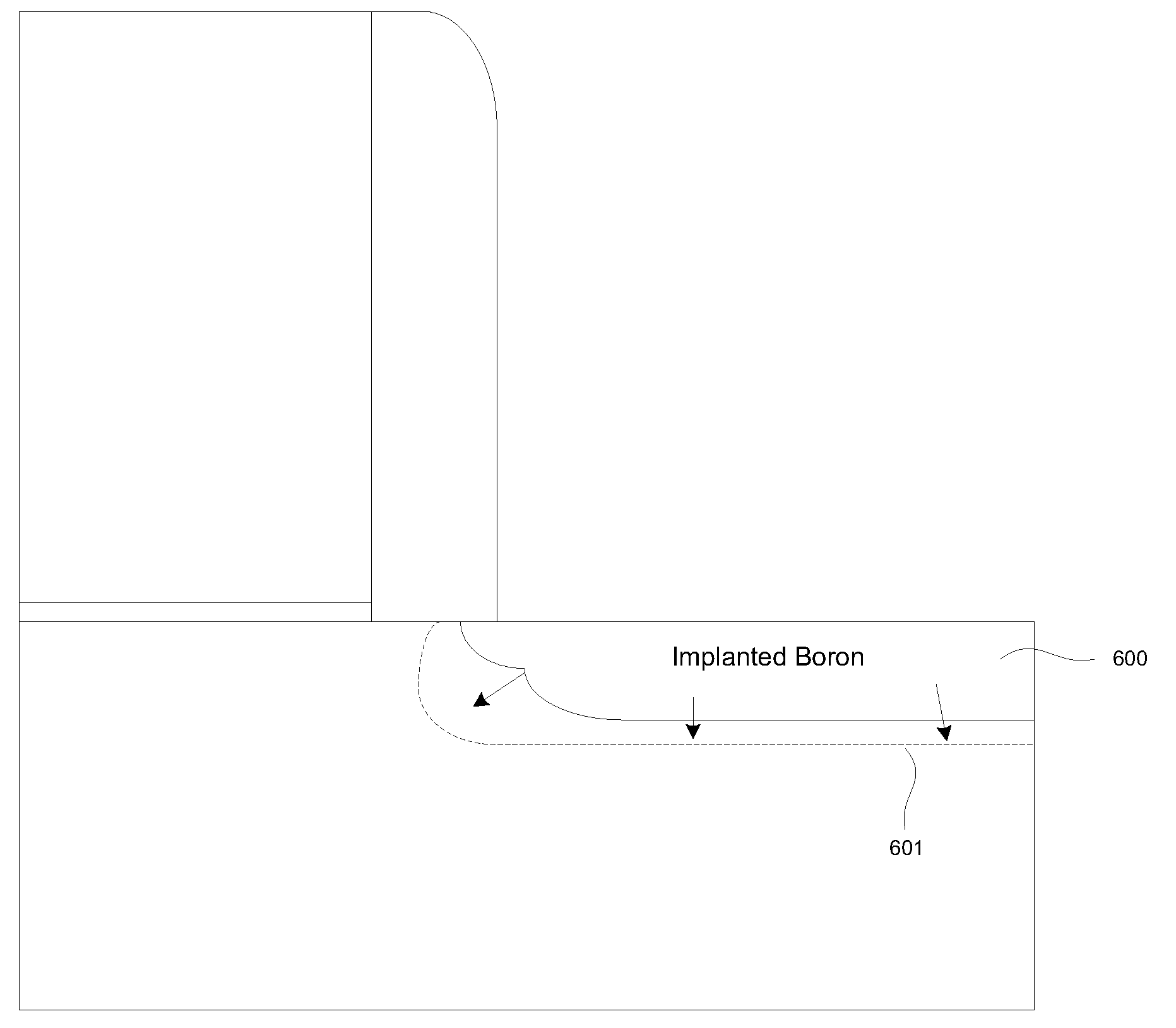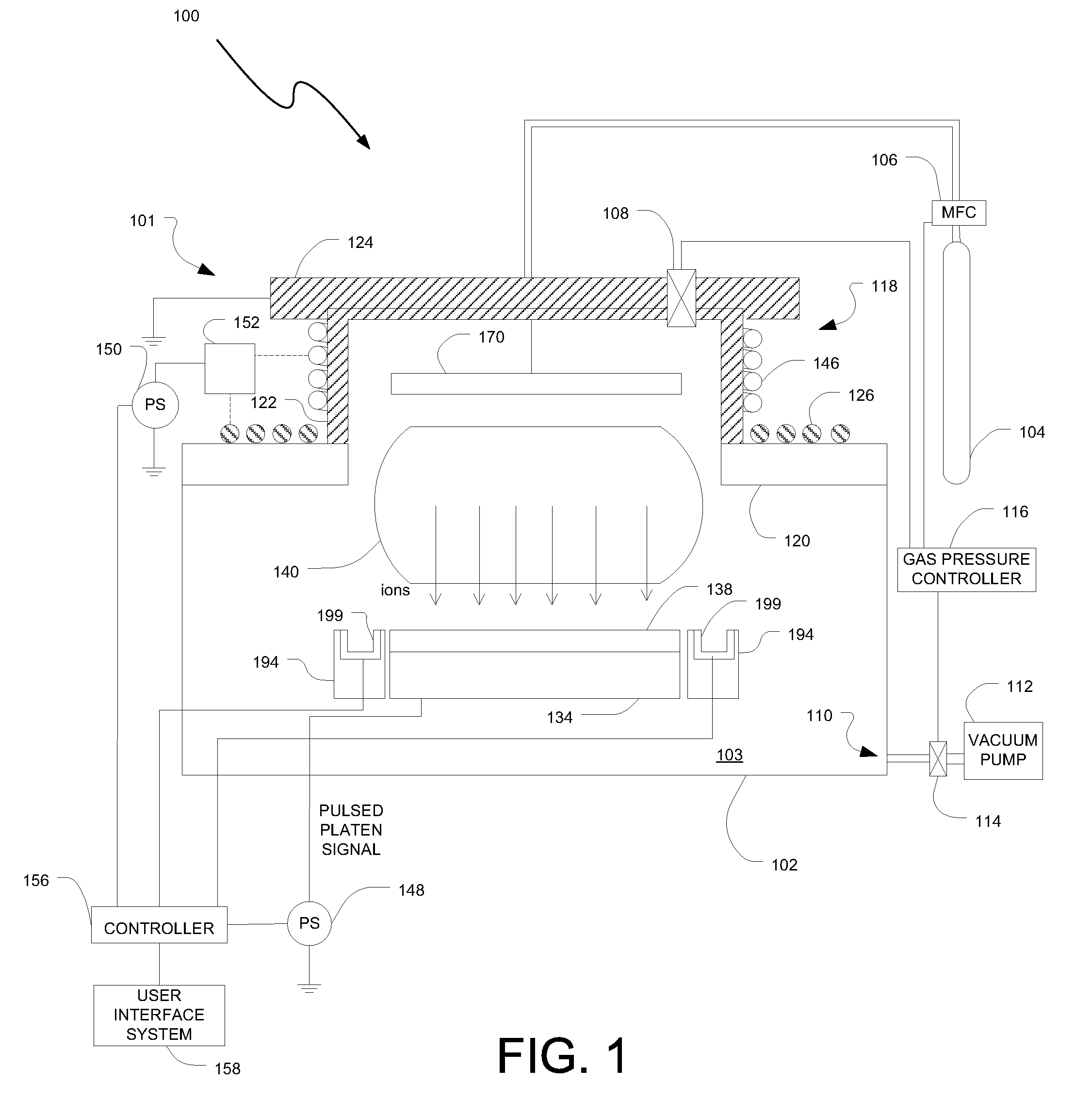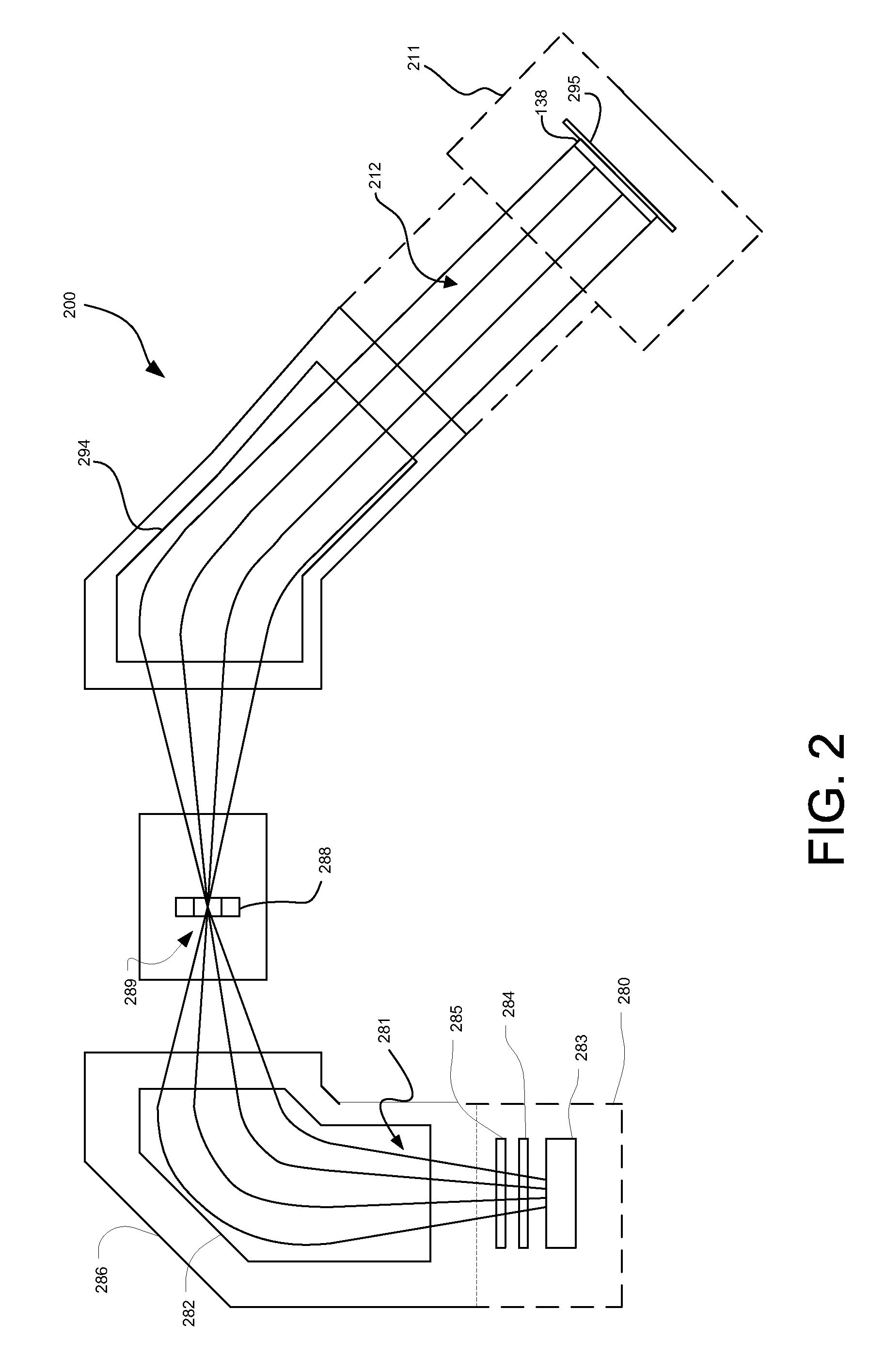Usj techniques with helium-treated substrates
a technology of helium-treated substrates and helium-treated substrates, which is applied in the direction of antibacterial agents, electrical equipment, semiconductor devices, etc., can solve the problems of ms anneal being unable to completely remove the damage of the implant, the end of range damage, and the subsequent leakage of complementary metal oxide semiconductor (cmos) transistors, etc., to achieve the effect of lowering the resistance of the substrate and enhancing the activation
- Summary
- Abstract
- Description
- Claims
- Application Information
AI Technical Summary
Benefits of technology
Problems solved by technology
Method used
Image
Examples
Embodiment Construction
[0037]As stated above, silicon is typically a crystalline structure, where each silicon atom is tetrahedrally bonded to four neighboring silicon atoms. By bombarding this crystalline structure with atoms, such as silicon, germanium, or helium, the crystalline structure of the silicon workpiece can be altered. FIG. 3 is a substrate with an amorphous crystal structure. This crystal lattice 300 is implanted with ions 301 to cause this amorphous structure. This crystal lattice 300 which may be made up of, for example, silicon atoms, is amorphous, lacks a long-range order, and includes some atoms with dangling bonds. These ions 301 may be part of a helium PAI, for example. Since the crystal lattice 300 lacks a long-range order, the channels within the crystal lattice 300 do not exist. Thus, ions are unable to channel between the crystal lattice 300.
[0038]By bombarding ion to amorphize the substrate, channeling of implanted ions can be eliminated. However, while PAI eliminates the channel...
PUM
 Login to View More
Login to View More Abstract
Description
Claims
Application Information
 Login to View More
Login to View More - R&D
- Intellectual Property
- Life Sciences
- Materials
- Tech Scout
- Unparalleled Data Quality
- Higher Quality Content
- 60% Fewer Hallucinations
Browse by: Latest US Patents, China's latest patents, Technical Efficacy Thesaurus, Application Domain, Technology Topic, Popular Technical Reports.
© 2025 PatSnap. All rights reserved.Legal|Privacy policy|Modern Slavery Act Transparency Statement|Sitemap|About US| Contact US: help@patsnap.com



